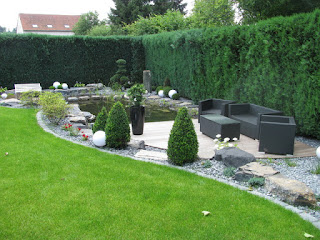Herbs, cereals or bamboos, grasses, or Poaceae, are a large, very variegated family. Very popular in our gardens, the many species of ornamental grasses offer an immense diversity of size, shape, and color that never ceases to amaze.
By the way, in another article, I'm talking about Miscanthus Gracillimus here if you want to know more about a particular grass.
Not to mention the many qualities that make them the friend of all gardeners, even amateurs.
Grasses: plants with cascading qualities
Between blooming flowers and exuberant foliage, deciduous and evergreen grasses provide decorative interest for much of the year, while being very simple to grow. Ornamental grasses such as purple pampas grass are indeed easy hosts in the garden. They are satisfied with an ordinary land and even settle for a poor soil, without requiring fertilizer.
Not content to be undemanding, grasses do not require special maintenance outside a winter size. And between spontaneous seedlings and underground rhizomes (depending on the species), their multiplication is effortless.
The hakonechloa macra or grass of Japan, bears pretty arched tufts, linear leaves
Highly resistant to diseases, grasses are a valuable ally of the gardener because they attract auxiliary insects. Left on the spot, the dried stems of deciduous grasses also form a valuable winter shelter. They can also be cut to provide mulch protection for other non-hardy plants.
With such qualities, the question is not whether to adopt them, but how to choose among all the species of grass!
Give relief to your massifs with grasses
Grasses are ideal plants to animate the massifs. With them, finished decorations frozen and no question of having to staggeringly sow his seedlings or plantations to ensure a continuous decoration.
Associated with annual flowers, the grasses come to underline the brightness of the flowering and ensure the spectacle once this one completed. Focus on contrasts by blending, for example, the golden flowers of Carex 'Aurea' or the almost black purple of an Ophiopogon 'Black Beard'.

No comments:
Post a Comment